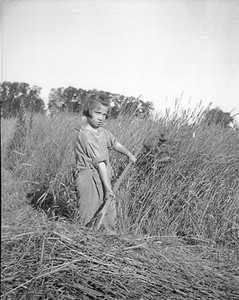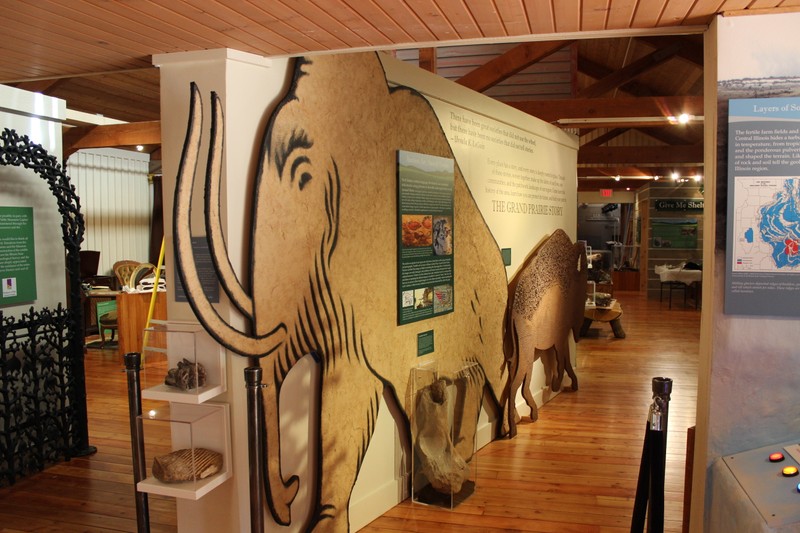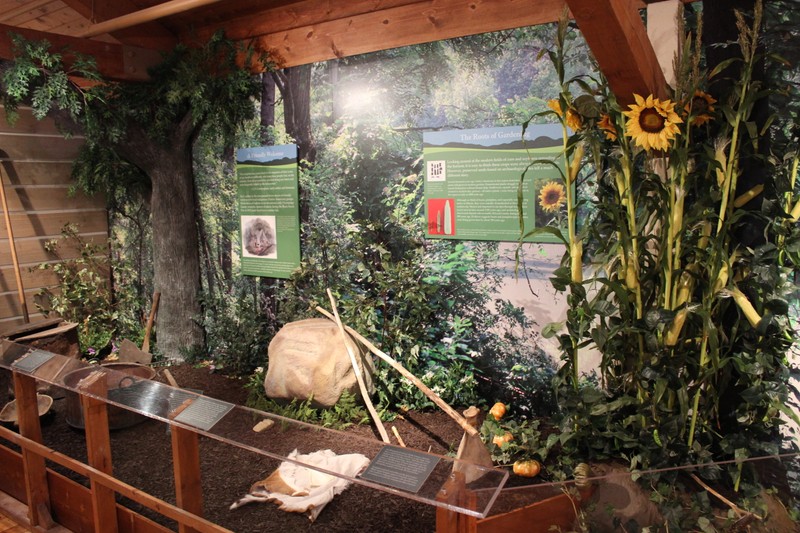The Grand Prairie Story
Introduction
Text-to-speech Audio
Images
Genevieve

Lifesize Mammoth

The Grand Prairie

Backstory and Context
Text-to-speech Audio
"There have been great societies that did not use the wheel, but there have been no societies that did not tell stories." - Ursula Le Guin.
Each of us has our own story, a story of living here-- on the verge of the Grand Prairie. Our stories inform our lives and the lives of those around us. Come visit and read, see, listen to, to stories of Native Americans and settlers, farmers and city folk, Irish and Germans and African Americans. Reflect on how the stories of others are similar to, or different from your own.
"The Grand Prarie Story" is an exhibit that narrates the natural history of Champaign County and how the early humans interacted with the environment. Scientists, archeologists, and historians have relied on soil samples, fossils, and Native American artifacts to narrate the story of the grand prarie in central Illinois. Guests of the museum are able to interact with replicas and technology to better understand the story of the first Americans in central Illinois. The exhibit includes some very interesting artifacts including wooly mammoth and mastodon teeth, a replica bison skull, ancient projectile points, grinding tools, atlatl darts, and clay pots.
Over millions of years, the landscape of Champaign County was transformed from frozen glaciers to flat prairies and low wetlands. Wooly mammoth and mastodon once roamed the area and were hunted by the nomadic tribes in the region. When the glaciers melted, water provided for extensive wildlife including sabertooth cats, giants sloths, and wolves. Flatlands allowed for periodic wildfires that provided beautiful wild flowers and tall prairie grasses. Much of central Illinois was covered with prairie until the 1700s, before farms began taking the place of the prairie in the 1800s. Within the exhibit, human technology is chronicled from 10,000 BCE to the 21st century as agricultural practices evolve from native techniques to John Deere's steel plow, and mechanized agriculture.
In the late 1600s, French explorers Jacques Marquette and Louis Jolliet arrived in Illinois. These men set the stage for interaction between Indigenous Americans and the European colonizers in the area. The Sadorus family arrived in East Central Illinois in 1824 and Potawatomi Natives occupied areas surrounding the Champaign County courthouse as late as 1832. While early accounts detail peaceful meetings between the Europeans and the Natives, interactions grew violent as Europeans expanded into Indigenous lands.
In the middle of the 19th century, the population of central Illinois skyrocketed as people immigrated from all over the world. By the 1860s, railroads stretched across the county and allowed Illinois to become a center for transportation and industry. Illinoisans profited from massive grain elevators that increased the production of farming. Family owned businesses flourished through downtown Champaign and Urbana.
The Grand Prairie Story was made possible, in part, with a grant from the State of Illinois Public Museums Capital Grant Program. This grant is administered through the Illinois department of Natural Resources and the Illinois State Museum.
